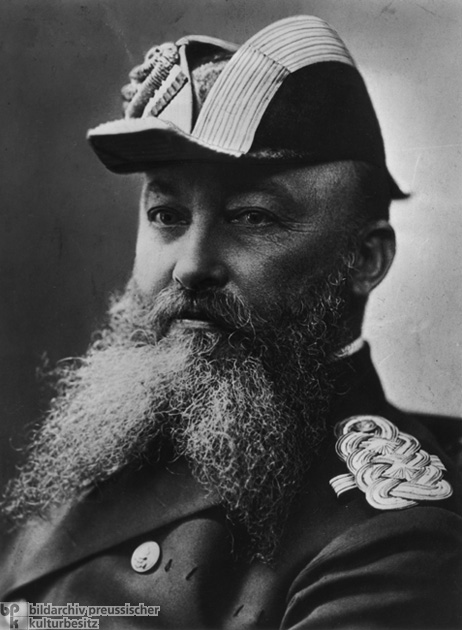Porcine heroics are the order of the day for this installment of the Wikiworm, or possibly treachery, depending on which side you’re on..
Tirpitz was a pig who switched sides in WW1, after he was captured from the German Navy following a naval skirmish. He subsequently became the mascot of the cruiser HMS Glasgow.
Pigs were often kept on board warships to supply fresh meat. Tirpitz the pig was stowed below decks aboard SMS Dresden when she was ordered into the South Atlantic to join with the forces of Vice Admiral Maximilian von Spee to begin raiding allied merchant shipping. SMS Dresden’s first encounter with HMS Glasgow was at the Battle of Coronel, where the German fleet was victorious. The Hun were subsequently defeated at the Battle of the Falkland Islands, though the faster Dresden managed to escape. She was located in Cumberland Bay on the Chilean island of Más a Tierra (today known as Robinson Crusoe Island), by HMS Glasgow and HMS Kent on 15 March 1915. The Germans scuttled the ship, but Tirpitz was left on board as she sank.
With terrific good fortune Tirpitz was able to make his way from the hold and swim clear of the sinking Dresden. He struck out for the nearby Royal Navy ships and was spotted an hour later by a petty officer aboard HMS Glasgow. The officer entered the water, but the frightened Tirpitz nearly drowned him. He was however eventually able to rescue the pig and bring him aboard. ‘Tirpitz’ was subsequently adopted by the crew of HMS Glasgow, who made him their mascot, and named him ‘Tirpitz’, after Alfred von Tirpitz, the German Admiral, and Secretary of State of the Imperial Naval Office. Tirpitz remained with the Glasgow for a year and was then placed in quarantine until he was allowed to be adopted by the Petty Officer who had first seen him, who transferred him to Whale Island Gunnery School, Portsmouth for the rest of his career. The Times newspaper reported:
The animal, which is known as ‘Tirpitz’, was once owned by the German light cruiser Dresden, and when, during the action with Glasgow, Kent, and Orama, the Germans escaped to the shore after causing an explosion which sank the Dresden, and ‘Tirpitz’ was left to its fate, the pig struck out boldly, and was seen swimming near the Glasgow. Two sailors dived into the sea, and the animal was brought safely aboard. The ship’s company of the Glasgow awarded ‘Tirpitz’ an ‘Iron Cross’ for having remained in the ship after its shipmates had left, and it became a great pet.
Tirpitz was eventually auctioned off for charity as pork in 1919. He ultimately raised £1,785 for the British Red Cross. Tirpitz was latterly bought by William Cavendish-Bentinck, 6th Duke of Portland, who donated Tirpitz’s stuffed head to the Imperial War Museum. Tirpitz’s head was put on display as part of the museum’s original exhibition at The Crystal Palace in 1920, and also featured in the museum’s 2006 temporary exhibition ‘The Animals’ War’.
Another of Tirpitz’s legacies was bequeathed to the next HMS Glasgow, which retained a pair of silver mounted carvers made from Tirpitz’s trotters. These carvers were later also acquired by the Imperial War Museum.
The other Tirpitz, yesterday













Tirpitz was eventually auctioned off for charity as pork in 1919.
So much for a land fit for heros.
Tirpitz looks quite happy in the first picture
Auctioned as pork? Pig hooey! He was auctioned several times as a living pig, raising £1,875 [cough] for the Red Cross.
More importantly, who is that redhead in the Shop Curious ad?
Vinny it would appear that you have unearthed the failings of Wikipedia! If I could be bothered I should try and update it I suppose